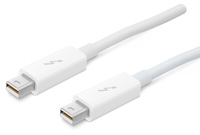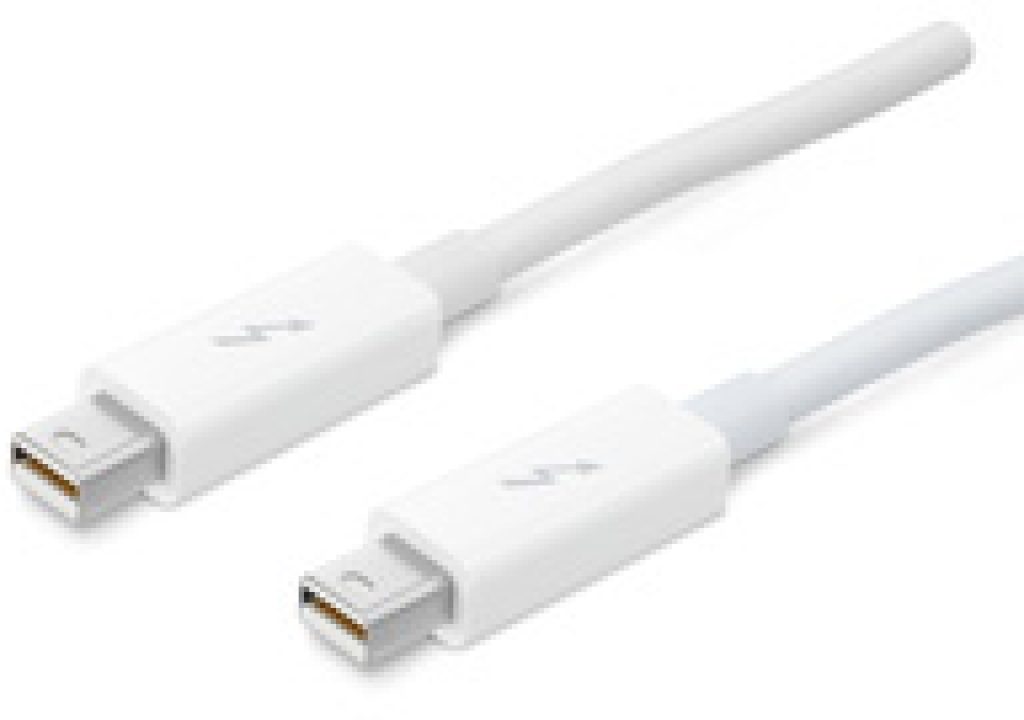
So, when Apple recently announced support for Thunderbolt the biggest question after the release by many in the video community was: “Who else is going to support this?”
The answer has come from a major player: Canon. This is a natural partner who can obviously utilize Thunderbolt’s 10Gbps port.
Thursday Canon announced that it would be coming out with at least one video camera that would use Intel’s Thunderbolt port.
According to Canon’s Hiroo Edakubo, “We are excited about Thunderbolt technology and feel it will bring new levels of performance and simplicity to the video creation market.”
Most of the players so far who have hinted at delivering products for Thunderbolt have been storage/hard drive related. Though AJA’s John Abt has teased on the Intel site: “Welcome to the future, Thunderbolt technology enables the fastest and simplest I/O for connecting AJA’s award-winning professional video capture and playback products to your laptop.” And BlackMagic’s Grant Petty also hinted, “Thunderbolt technology will revolutionize mobile media creation. It’s a game-changer and will accelerate our ability to build the highest quality video creation products that are affordable to everyone.”
If you’ve been living under a rock, or maybe haven’t given it your full attention quite yet, here’s the skinny on Thunderbolt so far:
Thunderbolt was originally code-named LightPeak and is an Intel technology that uses the same connection as the mini-display port on a Mac. It is designed for high-speed, dual-protocol (PCI Express and DisplayPort) I/O technology. Basically it’s the next step after USB3 and Firewire800, with the twist that it’s also a display protocol.

At 10 Gbps, Thunderbolt simultaneously delivers high-speed data and display transfers in each direction. At that rate, it is possible to transfer a full-length HD movie in less than 30 seconds or backup a year of continuous MP3 playback in just over 10 minutes. Cool, I was trying to figure out how to get my C-SPAN archive onto my MacBookPro.
Thunderbolt can be daisy-chained. Initially it will be released on Apple products as a copper-wire cable but will eventually utilize optical cables that will allow very long cable runs. The cable will allow power over the cable for bus-powered devices.
Thunderbolt is not just a cable and port. It transmits and receives packetized data – going both directions at the same time – with all the traffic handled by a controller chip in the computer and other external devices – like the newly announced Canon cameras. Intel is promising workstation performance expansion on a laptop. Obviously, with this type of throughput, the types of devices that will be able to benefit from this speed are things like hard drives, RAIDs, and probably IO devices like those by AJA and Blackmagic. This could also allow for “expansion chassis” type devices that will allow laptops to tap in to workstation-like power that was never before possible. For example, many people use workstations, including the MacPro towers, because they need the slots for graphics and video cards. Those cards could possibly sit in an expansion chassis or some kind of external device and be linked to a Thunderbolt-enabled laptop. Intel also claims that adapting existing I/O technologies, like GigE, FireWire or eSATA should be simple to do.
Beyond Canon and Apple, LaCie has also announced support for Thunderbolt. Others are sure to follow.


